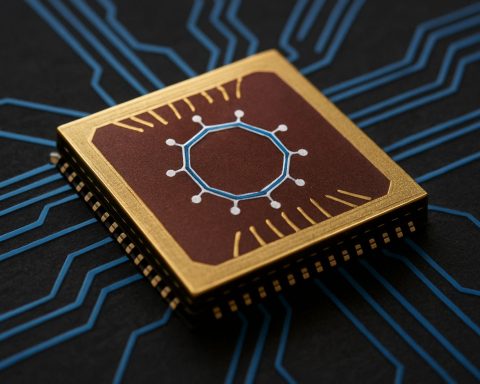Unmasking the Power and Passion of Jujutsu Kaisen Fandom Culture: How Fans Shape, Celebrate, and Transform the Series Beyond the Screen
- Origins of the Jujutsu Kaisen Fandom
- Key Demographics and Global Reach
- Fan Art, Cosplay, and Creative Expression
- Online Communities and Social Media Movements
- Shipping, Headcanons, and Fan Theories
- Merchandise, Collectibles, and Economic Impact
- Fan Events, Conventions, and Meetups
- Controversies and Fandom Conflicts
- Influence on Official Content and Collaborations
- The Future of Jujutsu Kaisen Fandom Culture
- Sources & References
Origins of the Jujutsu Kaisen Fandom
The origins of the Jujutsu Kaisen fandom are deeply intertwined with the manga’s initial serialization and the subsequent anime adaptation, both of which played pivotal roles in cultivating a passionate and global fanbase. Jujutsu Kaisen began as a manga series written and illustrated by Gege Akutami, first serialized in Weekly Shonen Jump in March 2018. The manga’s publisher, Shueisha, is a major force in the Japanese publishing industry, known for launching some of the most influential manga franchises. The early chapters of Jujutsu Kaisen quickly garnered attention for their dynamic storytelling, unique supernatural themes, and compelling character development, which resonated with readers and set the stage for a burgeoning fandom.
The fandom’s growth accelerated significantly with the announcement and release of the anime adaptation by TOHO and animation studio MAPPA in 2020. MAPPA, recognized for its high-quality animation and adaptation of popular manga, brought the series to a wider audience through visually striking action sequences and faithful storytelling. The anime’s broadcast on major Japanese networks and its international streaming availability through platforms like Crunchyroll enabled fans worldwide to access the series simultaneously, fostering a global community of viewers who engaged in real-time discussions, fan art, and theory crafting.
The official involvement of these organizations—Shueisha as the manga publisher, TOHO as the anime’s production company, and MAPPA as the animation studio—provided the infrastructure for the fandom to flourish. Their coordinated efforts in marketing, merchandise, and event organization, such as exhibitions and collaborations, further solidified the series’ cultural impact. The release of the prequel film, Jujutsu Kaisen 0, also produced by TOHO and MAPPA, expanded the narrative universe and attracted new fans, reinforcing the fandom’s growth.
In summary, the origins of the Jujutsu Kaisen fandom are rooted in the collaborative efforts of key industry organizations and the series’ ability to connect with audiences through both print and animated media. The synergy between manga serialization, anime adaptation, and global distribution has been instrumental in shaping a vibrant and enduring fandom culture.
Key Demographics and Global Reach
The fandom culture surrounding Jujutsu Kaisen is a testament to the series’ broad appeal and its ability to resonate with diverse audiences worldwide. Since its debut as a manga in 2018 and subsequent anime adaptation, Jujutsu Kaisen has rapidly expanded its fanbase, both in Japan and internationally. The series is published by Shueisha, one of Japan’s largest and most influential publishing companies, and is serialized in the renowned Weekly Shonen Jump magazine, which has historically targeted a core demographic of young male readers (shōnen), typically aged between 12 and 18. However, the actual reach of Jujutsu Kaisen extends well beyond this initial target group.
The anime adaptation, produced by Toho Co., Ltd. and animated by MAPPA Co., Ltd., has played a pivotal role in globalizing the franchise. Streaming platforms such as Crunchyroll and Netflix have made the series accessible to viewers in over 200 countries and territories, contributing to a significant international following. According to official data from Crunchyroll, Jujutsu Kaisen consistently ranks among the most-watched anime titles worldwide, with particularly strong viewership in North America, Europe, Southeast Asia, and Latin America.
Demographically, the fandom is notably diverse. While the core audience remains teenagers and young adults, the series’ complex characters, mature themes, and high-quality animation have attracted older viewers and a significant female fanbase. Social media platforms such as Twitter, TikTok, and Instagram have become hubs for fan engagement, with users sharing fan art, cosplay, theories, and memes, further broadening the community’s age and gender spectrum. The official Shueisha and Toho Co., Ltd. merchandise lines, as well as collaborations with global brands, reflect the franchise’s appeal to both casual viewers and dedicated collectors.
The global reach of Jujutsu Kaisen is also evident in its commercial success. The manga has sold over 80 million copies worldwide, and the anime’s theatrical film, Jujutsu Kaisen 0, achieved box office success in multiple countries. This widespread popularity underscores the series’ ability to transcend cultural and linguistic barriers, fostering a vibrant and inclusive fandom culture that continues to grow across continents.
Fan Art, Cosplay, and Creative Expression
The vibrant fandom culture surrounding Jujutsu Kaisen is characterized by a remarkable outpouring of fan art, cosplay, and diverse creative expressions. As a globally popular manga and anime series, Jujutsu Kaisen has inspired fans to engage deeply with its characters, themes, and aesthetics, fostering a dynamic community of creators and enthusiasts.
Fan art is a cornerstone of the Jujutsu Kaisen fandom. Artists across the world share illustrations, digital paintings, and reinterpretations of beloved characters such as Yuji Itadori, Satoru Gojo, and Nobara Kugisaki. These works are widely disseminated on social media platforms and art communities, often with the encouragement of the series’ official publishers. Shueisha, the Japanese publishing giant behind the original manga, has acknowledged the importance of fan engagement and occasionally features fan creations in official events and campaigns. Similarly, Toho Co., Ltd., the anime’s production company, supports fan-driven activities through collaborations and merchandise that reflect the creativity of the community.
Cosplay is another prominent form of creative expression within the Jujutsu Kaisen fandom. Fans meticulously craft costumes and props to embody their favorite characters, often showcasing their work at conventions, online events, and through dedicated social media accounts. The attention to detail in replicating the series’ distinctive uniforms, cursed tools, and supernatural effects highlights the dedication and skill of the cosplay community. Official events organized by Aniplex, a key distributor and licensor of the anime, frequently feature cosplay contests and photo opportunities, further legitimizing and celebrating this aspect of fandom culture.
Beyond visual art and cosplay, fans express their passion through music covers, dance performances, fan fiction, and even original animations. These creative outputs not only pay homage to the source material but also expand the narrative universe, allowing for new interpretations and shared experiences. The official recognition and occasional promotion of fan works by entities like Shueisha and Toho Co., Ltd. have helped cultivate an inclusive and participatory environment, where fans feel empowered to contribute to the ongoing legacy of Jujutsu Kaisen.
Online Communities and Social Media Movements
The online communities and social media movements surrounding Jujutsu Kaisen have played a pivotal role in shaping and amplifying its fandom culture. As a globally popular manga and anime series, Jujutsu Kaisen has inspired a vibrant digital ecosystem where fans connect, create, and mobilize around shared interests. Central to this phenomenon are platforms such as Twitter, Reddit, Discord, and TikTok, where fans engage in real-time discussions, share fan art, analyze episodes, and participate in trending challenges.
On Twitter, hashtags like #JujutsuKaisen and #呪術廻戦 (the Japanese title) regularly trend during new episode releases or major announcements. These hashtags facilitate global conversations, allowing fans to share reactions, theories, and memes. The official accounts of the anime’s production companies, such as TOHO and Shueisha, further fuel engagement by posting exclusive content, updates, and interactive polls, which are often retweeted and discussed widely.
Reddit hosts several active communities, most notably r/Jujutsushi, where users post in-depth analyses, fan theories, and chapter discussions. These forums serve as hubs for long-form conversation and collaborative speculation, fostering a sense of collective participation in the unfolding narrative. Discord servers, meanwhile, offer real-time chat environments for fans to organize watch parties, roleplay, and share creative works, strengthening interpersonal bonds within the fandom.
TikTok has emerged as a particularly influential platform for Jujutsu Kaisen fandom culture. Short-form videos featuring cosplay, scene reenactments, and character-inspired dances often go viral, reaching millions of viewers and introducing the series to new audiences. These trends are frequently amplified by the use of official soundtracks and clips, which are made available through licensing agreements with the anime’s music producers and distributors.
Online fan mobilization extends beyond content sharing to include coordinated campaigns, such as trending hashtags to celebrate character birthdays or support for official merchandise launches. These movements often catch the attention of the series’ creators and production companies, who sometimes respond with acknowledgments or special content, further reinforcing the reciprocal relationship between fans and the official entities behind Jujutsu Kaisen.
In summary, the online communities and social media movements dedicated to Jujutsu Kaisen exemplify the dynamic interplay between fans and official organizations like TOHO and Shueisha. These digital spaces not only sustain the series’ popularity but also foster a participatory culture that continually shapes the evolution of the fandom.
Shipping, Headcanons, and Fan Theories
Within the vibrant Jujutsu Kaisen fandom, the practices of shipping, developing headcanons, and formulating fan theories are central to community engagement and creative expression. Shipping—the act of supporting or imagining romantic pairings between characters—has become a significant aspect of fan culture. Popular ships, such as Gojo Satoru and Geto Suguru (often referred to as “GojoGeto”), or Yuji Itadori and Megumi Fushiguro, are frequently discussed and depicted in fan art, fanfiction, and social media threads. These ships are not always canonically supported but are instead driven by character dynamics, subtext, and the personal interpretations of fans.
Headcanons, or fan-generated beliefs about characters or story elements not explicitly confirmed in the official material, further enrich the fandom experience. For example, some fans speculate about the backstories or motivations of secondary characters, or imagine how characters might behave in everyday, non-canon scenarios. These headcanons are often shared on platforms like forums, fanfiction sites, and social media, fostering a sense of community and collaborative storytelling.
Fan theories, meanwhile, reflect the analytical side of the fandom. As Jujutsu Kaisen is serialized in Shueisha‘s Weekly Shonen Jump and adapted by Toho Co., Ltd. and MAPPA Co., Ltd., fans closely follow new chapters and episodes, dissecting plot developments and foreshadowing. Theories about the true nature of cursed energy, the fate of major characters, or the motivations of antagonists are common topics of discussion. These theories are often supported by detailed analysis of manga panels, anime scenes, and official interviews with creator Gege Akutami, whose cryptic storytelling style encourages speculation.
The official presence of Shueisha and MAPPA Co., Ltd. in the production and distribution of Jujutsu Kaisen provides a steady stream of new content, which continually fuels fan creativity. Official character guides, interviews, and promotional materials sometimes confirm or debunk popular headcanons and theories, further energizing discussions. The interplay between canon material and fan interpretation exemplifies the dynamic relationship between creators and the audience in contemporary anime and manga fandoms.
Overall, shipping, headcanons, and fan theories are not only outlets for personal expression but also serve as mechanisms for community building within the Jujutsu Kaisen fandom, reflecting the series’ impact and the participatory nature of modern fan culture.
Merchandise, Collectibles, and Economic Impact
The global popularity of Jujutsu Kaisen has significantly influenced the anime merchandise and collectibles market, reflecting the fervor and dedication of its fandom. Since its debut, the franchise has spawned a vast array of official merchandise, including action figures, apparel, accessories, stationery, and home goods. These products are often produced in collaboration with major Japanese manufacturers such as Bandai and Good Smile Company, both of which are renowned for their high-quality anime figures and collectibles. Limited-edition releases and exclusive items, often tied to special events or anniversaries, further fuel demand and create a thriving secondary market among collectors.
The economic impact of Jujutsu Kaisen merchandise is substantial. According to data from TOHO Co., Ltd., the official distributor and production company for the anime adaptation, the franchise has consistently ranked among the top-selling anime properties in Japan and internationally. Sales of Blu-rays, DVDs, and official goods contribute significantly to the franchise’s revenue, supplementing income from streaming rights and theatrical releases. The popularity of character goods, such as plush toys and acrylic stands, is particularly notable at anime conventions and pop-up stores, where fans often queue for hours to purchase exclusive items.
Collaborations with major retail chains and lifestyle brands have further expanded the reach of Jujutsu Kaisen merchandise. For example, partnerships with companies like UNIQLO have resulted in limited-edition clothing lines featuring iconic characters and motifs from the series. These collaborations not only boost merchandise sales but also introduce the franchise to broader consumer demographics, enhancing its cultural footprint.
The collectibles market is also shaped by the active participation of fans, who engage in trading, reselling, and showcasing their collections online and at fan events. Social media platforms and dedicated fan communities facilitate the exchange of information about new releases, rare items, and upcoming collaborations, fostering a sense of camaraderie and shared enthusiasm. This vibrant ecosystem supports a robust secondary market, where rare or discontinued items can command premium prices.
Overall, the economic impact of Jujutsu Kaisen merchandise and collectibles underscores the franchise’s significance within the anime industry. The synergy between official producers, retail partners, and the passionate fanbase ensures that the franchise remains a major driver of both cultural engagement and commercial success.
Fan Events, Conventions, and Meetups
The global popularity of Jujutsu Kaisen has fostered a vibrant and dynamic fandom culture, with fan events, conventions, and meetups playing a central role in community engagement. These gatherings provide fans with opportunities to celebrate their shared passion, interact with creators and voice actors, and immerse themselves in the world of the series.
Major anime conventions, such as Anime Expo in the United States and AnimeJapan in Japan, frequently feature Jujutsu Kaisen panels, exclusive screenings, and merchandise booths. At these events, official partners like TOHO Co., Ltd.—the anime’s distributor—and Shueisha—the manga’s publisher—often organize special exhibitions, autograph sessions, and Q&A panels with the creative team. These activities allow fans to gain insights into the production process and interact directly with the people behind their favorite series.
Cosplay is a prominent aspect of Jujutsu Kaisen fandom at conventions. Fans meticulously recreate the costumes of characters such as Yuji Itadori, Satoru Gojo, and Nobara Kugisaki, participating in cosplay contests and group photoshoots. These events foster a sense of camaraderie and creativity, as fans exchange tips and showcase their craftsmanship.
In addition to large-scale conventions, local fan meetups and themed pop-up events have become increasingly popular. These gatherings, often organized by fan communities or in collaboration with official partners, may include trivia nights, art exhibitions, and collaborative viewing parties for new episodes or movie releases. For example, Crunchyroll, a leading anime streaming platform, has hosted special Jujutsu Kaisen screenings and interactive fan experiences in various cities, further strengthening the global fan network.
Internationally, the franchise’s reach is evident in the diversity of its fan events. In Southeast Asia, Europe, and Latin America, conventions regularly feature Jujutsu Kaisen content, reflecting the series’ widespread appeal. Official merchandise pop-ups, such as those organized by Animate—a major Japanese anime retailer—offer fans exclusive goods and themed experiences, often drawing large crowds.
Overall, fan events, conventions, and meetups are integral to the Jujutsu Kaisen fandom culture. They not only provide spaces for celebration and creative expression but also reinforce the sense of community that has propelled the series to international acclaim.
Controversies and Fandom Conflicts
The vibrant fandom culture surrounding Jujutsu Kaisen has contributed significantly to the series’ global popularity, but it has also given rise to notable controversies and internal conflicts. As with many large and passionate fan communities, the intersection of diverse opinions, creative expression, and social media dynamics has sometimes led to friction both within the fandom and between fans and official entities.
One recurring source of controversy involves the interpretation of characters and storylines. Fans often engage in spirited debates over character motivations, relationships, and the direction of the plot. These discussions can escalate into heated arguments, particularly regarding “shipping” (the support of romantic pairings, whether canon or fan-imagined). Disagreements over ships such as Gojo x Geto or Yuji x Nobara have, at times, led to harassment and exclusionary behavior within online spaces, highlighting the challenges of maintaining respectful discourse in large, decentralized communities.
Another area of conflict has emerged around fan-created content, such as fan art, fan fiction, and unofficial merchandise. While the creators and publishers of Jujutsu Kaisen—notably Shueisha (the manga’s publisher) and Toho Co., Ltd. (the anime’s distributor)—generally tolerate non-commercial fan works, there have been instances where copyright enforcement actions have sparked backlash. For example, takedown notices issued to fan artists on social media platforms have led to debates about the boundaries of fair use and the rights of fans to creatively engage with the source material. These incidents underscore the tension between protecting intellectual property and fostering a thriving fan culture.
The fandom has also faced criticism for toxic behaviors, including online harassment, gatekeeping, and the spread of spoilers. High-profile leaks of manga chapters or anime episodes before their official release have prompted both ethical debates and official responses from publishers. Shueisha has periodically issued statements urging fans to avoid sharing unauthorized content, emphasizing the importance of supporting creators through legal channels.
Finally, the rapid internationalization of the Jujutsu Kaisen fandom has introduced cultural differences in interpretation and engagement. Disputes sometimes arise over localization choices, translation accuracy, and the portrayal of sensitive themes, reflecting broader conversations about representation and inclusivity in global media fandoms.
Overall, while controversies and conflicts are not unique to the Jujutsu Kaisen fandom, their visibility highlights the complexities of participatory culture in the digital age and the ongoing negotiation between fans, creators, and official organizations.
Influence on Official Content and Collaborations
The vibrant fandom culture surrounding Jujutsu Kaisen has played a significant role in shaping the series’ official content and driving a wide array of collaborations. As one of the most popular contemporary anime and manga franchises, Jujutsu Kaisen has cultivated a global fanbase whose enthusiasm and creative output have not only amplified the series’ reach but also influenced the direction of its official media and partnerships.
Fan engagement is evident in the way production studios and publishers respond to audience feedback and trends. Jujutsu Kaisen is produced by MAPPA, a renowned animation studio known for its responsiveness to fan communities. The studio’s attention to detail in animation, character design, and adaptation choices often reflects the preferences and discussions prevalent within the fandom. For example, the inclusion of popular manga scenes and the faithful adaptation of character moments are frequently cited as responses to fan expectations, as observed in official interviews and production notes released by MAPPA.
The influence of the fandom extends to official merchandise and event planning. Shueisha, the publisher of the original manga, regularly collaborates with fans through surveys, polls, and interactive campaigns to determine which characters or story arcs should be featured in new products or promotional events. This participatory approach ensures that the most beloved aspects of the series receive prominent attention, further strengthening the bond between creators and the audience.
Collaborations with external brands and organizations are another area where fandom culture exerts considerable influence. The popularity of Jujutsu Kaisen has led to high-profile partnerships with companies in fashion, food, and entertainment. For instance, limited-edition apparel lines, themed cafes, and cross-promotions with other media franchises are often launched in response to fan demand and social media trends. These collaborations are typically announced and coordinated through official channels such as TOHO, the series’ distributor, and are designed to engage the community both in Japan and internationally.
Moreover, fan-driven activities such as fan art, cosplay, and online discussions frequently inspire official recognition and even integration into marketing strategies. Special exhibitions, contests, and digital campaigns often highlight fan contributions, blurring the line between consumer and creator. This dynamic, reciprocal relationship between the Jujutsu Kaisen fandom and its official content producers exemplifies the modern landscape of participatory media culture, where audience passion directly shapes the evolution and outreach of a franchise.
The Future of Jujutsu Kaisen Fandom Culture
The future of Jujutsu Kaisen fandom culture appears vibrant and dynamic, shaped by both the ongoing evolution of the franchise and the increasingly globalized nature of anime communities. As the manga continues serialization and the anime adaptation by MAPPA Studio garners international acclaim, the fandom is expected to expand and diversify, drawing in new audiences from around the world. The official involvement of major entities such as Shueisha (the manga’s publisher) and Toho Co., Ltd. (the anime’s distributor) ensures a steady stream of content, merchandise, and events that fuel fan engagement.
Digital platforms will play a pivotal role in shaping the next phase of fandom culture. Social media, streaming services, and official online communities allow fans to connect, share fanworks, and participate in global conversations about the series. The accessibility of simulcast episodes and official translations through platforms like Crunchyroll and VIZ Media further democratizes access, enabling real-time engagement and reducing barriers for international fans. This interconnectedness fosters a sense of shared experience, where fan theories, memes, and creative works can go viral across continents.
Official events, such as exhibitions, stage plays, and collaborations with other brands, are likely to become more frequent and ambitious. These events, often organized by Toho Co., Ltd. and Shueisha, not only celebrate the series but also provide fans with immersive experiences that deepen their connection to the story and characters. The rise of virtual events and digital fan conventions, accelerated by recent global trends, suggests that future gatherings will blend physical and online participation, making them more inclusive and accessible.
Merchandising will continue to be a cornerstone of fandom culture, with official figures, apparel, and collectibles evolving in response to fan demand. The collaboration between production companies and global retailers ensures that fans worldwide can access high-quality, authentic products. Additionally, the growing recognition of fan creativity—through official fan art contests and collaborations—signals a future where the boundary between creators and fans becomes increasingly porous.
In summary, the future of Jujutsu Kaisen fandom culture is characterized by global connectivity, official support, and a vibrant exchange between creators and fans. As the franchise continues to innovate and expand, its fandom is poised to remain a dynamic force within the broader anime and manga community.












